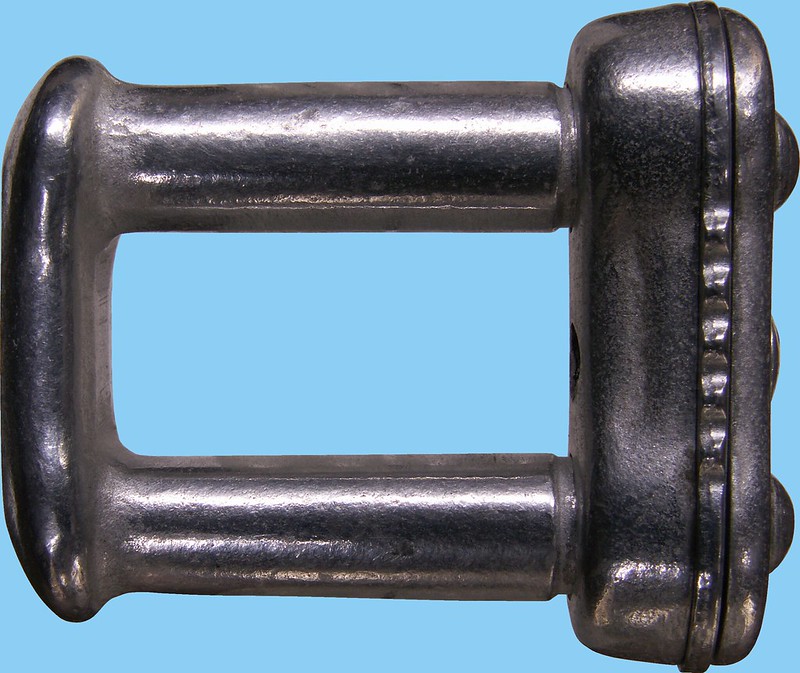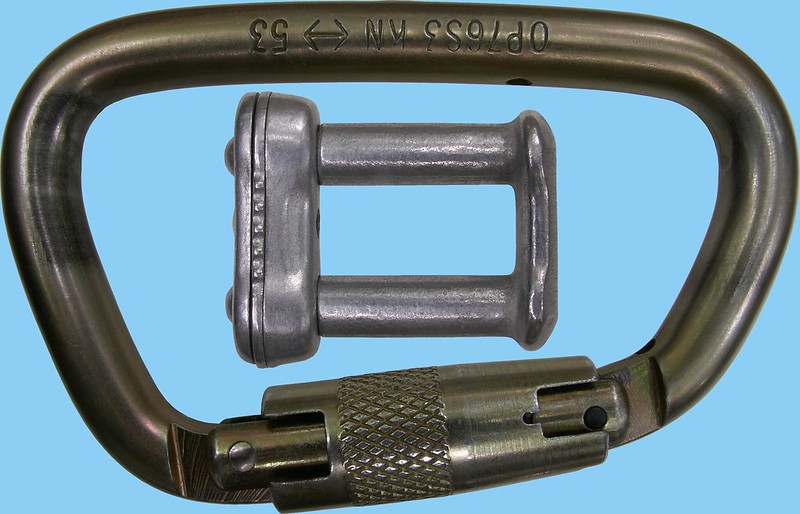Some [maybe old] thoughts about Failure to Hook In
- The fundamental problem with these gadgets is that their proposers and developers are all pretty much totally incapable of grasping the concept - let alone implementing the act - of a hook-in check JUST PRIOR TO LAUNCH.Frank Peel - 2010/06/09 23:05:35 UTC
There have been multiple designs published in USHGA magazine (a now defunct periodical). They all had the same issue: they were fallible. They had to be reset after flying, had batteries that could go dead, were overly complex, included fragile parts, etc.
Checklists are mandatory in most forms of aviation. FD and my suggestion is essentially a checklist, albeit one that has been internalized. A good place to start is a written version clipped to your harness. Keep it simple and over time it will become automatic.
If it doesn't, well, Darwin has to eat, too.
- The freakin' launch ramp is no place for checklist. Use the goddam checklist in the setup area for all the preflight issues. When you get on the freakin' ramp you're in launch mode and the only two things you need to be worried about are being connected to the glider and having it properly trimmed THE INSTANT BEFORE YOU LEAVE. And you should've had those two items properly internalized before your first session on the training hill was over.
Here we go...Robert Seckold - 2010/06/09 23:14:44 UTC
Australia
Or verifying that you're hooked in JUST PRIOR TO LAUNCH. Or verifying that that anyone else is hooked in JUST PRIOR TO LAUNCH. Or wondering if you nailed your leg loops ten minutes ago. What more could one ask for?The reason I use the Aussie method is not because I live in Australia it is because it does not rely on me remembering to hook in.
Right after you've assembled it in your driveway then gone back in the garage to for the driver's bucket seat which doesn't fit in the car case.Like you never have to remember to open the car door to go for a drive. You have to open the door to get into the car.
Yeah!!! You can ALWAYS just ASSUME that it is! Is that a great system or what!I never have to remember as I take off is my harness connected to my glider.
The glider WILL and MUST be operable without the harness connected if you wanna do things like move it back up the training hill in a bit of wind, maneuver it through a difficult, dangerous approach to launch, or tie it down while you grab a bite for lunch.As I stand on the launch with the glider on my shoulders I never have to remember did I pull on the tension to spread my wings. It is built into my setup procedure, my wing will not physically make it to the launch without the pull back tensioned...although this does not apply to an Airborne topless as demonstrated in a recent youtube adventure.
You get the idea, what I learned when training for the safety officer's job at my power station is you have to build a system that makes it mechanically impossible for someone to hurt themselves. That is why they put cages around machinery that will only work when the cage is down and your hands are away from the press.
I'm smart enough to know I'm way too stupid to EVER rely on my memory. So what always works for me is...Yes I hear you all screaming at your computers...you can't make anything foolproof, there will always be a way to hurt yourself. You are right there but at least make it that it does not rely on your memory to do the right thing.
...fear.Rob Kells - 2005/12
Each of us agrees that it is not a particular method, but rather the fear of launching unhooked that makes us diligent to be sure we are hooked in every time before starting the launch run.
BULLSHIT.Whenever you have to remember to do something to keep you safe, there will come a time when you WILL forget.
- I can cite you more Aussie Methodist than you can lift and tugger pooch screws.
- I've never heard a first hand report of a lift and tugger forgetting to do his procedure.
- I NEVER ONCE came anywhere CLOSE to forgetting to lift and tug.
- I've NEVER ONCE forgotten to buckle my seatbelt before the car started rolling. Plenty of times I didn't do it but NEVER because I just forgot.
- Even if someone DOES forget to lift and tug once every thousand launches, for that to be of consequence he's gotta line that pooch screw up with two other pooch screws - failing to both make and preflight the connection.
- Virtually all of them hang checkers and lapsed Aussie Methodists. And virtually none of them lift and tuggers.Which has been proven time and time again in America especially with pilots year after year forgetting to hook in.
- ALL of them? Even some of these idiot hang checkers manage to complete long careers without ever neglecting to perform their lunatic rituals.
http://http://www.hanggliding.org/viewtopic.php?t=21868If they are very lucky they walk away to maybe have a chance at using the Aussie method, if not well they never have to remember again.
Don't Forget your Hang Check!
Hang Gliding on Chelan ButteEric Hinrichs - 2011/05/13 21:31:06 UTC
I went to Chelan for the Nationals in '95 as a free flyer. They were requiring everyone to use the Australian method, and you were also not allowed to carry a glider without being hooked in.
This was different for me, I hook in and do a full hang check just behind launch right before I go. I was also taught to do a hooked in check right before starting my run, lifting or letting the wind lift the glider to feel the tug of the leg loops.
So I used their method and I'm hooked in, carrying my glider to launch and someone yells "Dust devil!" Everyone around runs for their gliders (most of which are tied down) and I'm left standing alone in the middle of the butte with a huge monster wandering around. I heard later that it was well over three hundred feet tall, and some saw lightning at the top. After that it was clear that no one is going to decide for me or deride me for my own safety methods, someone else's could have easily got me killed.
http://www.youtube.com/watch?v=_FDJTApk5Hw
tamingthekat - 2010/07/06
dead
02-00007

04-00111
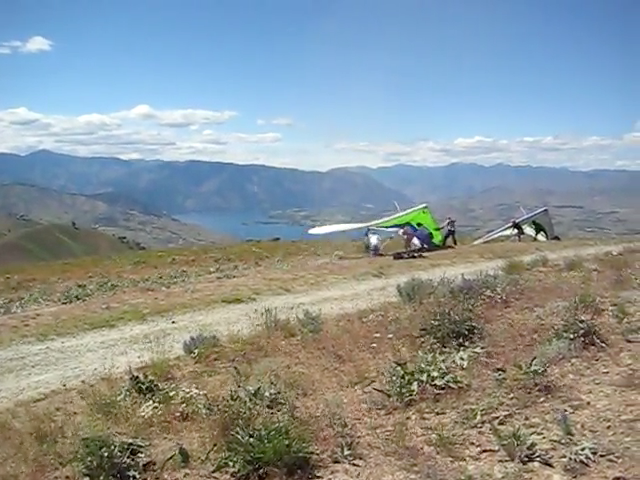
10-00518
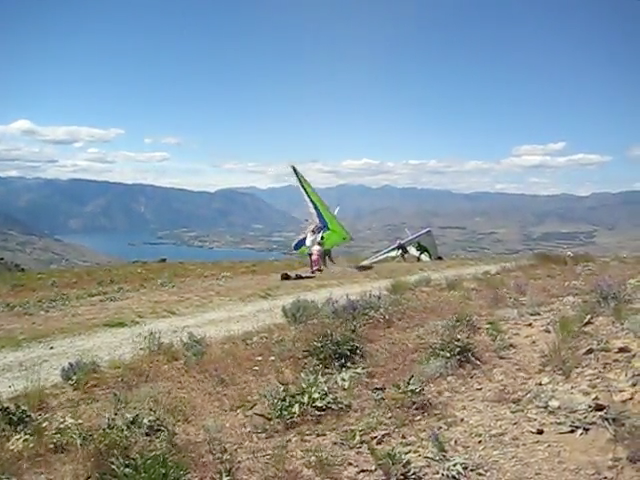
20-00727
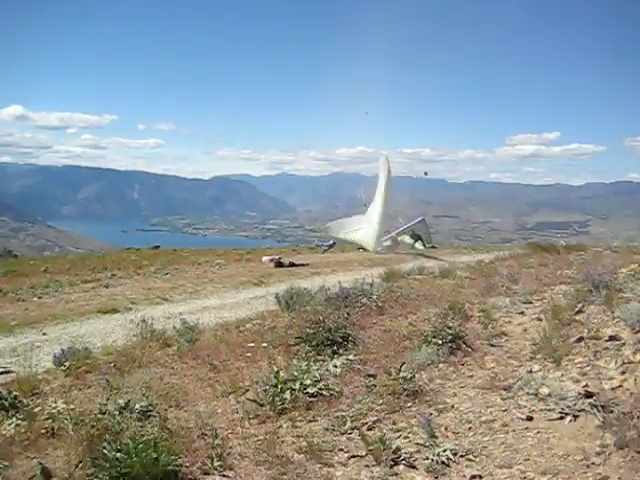
28-00828
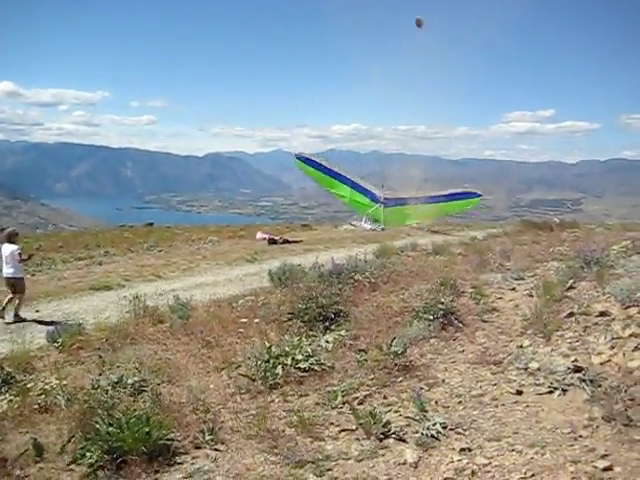
47-01225
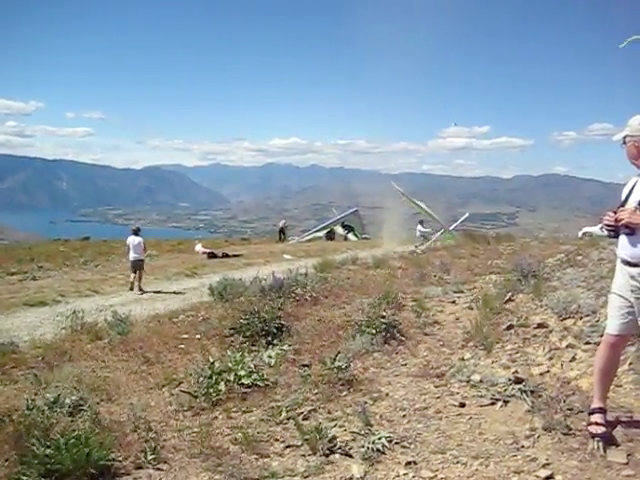
54-01511
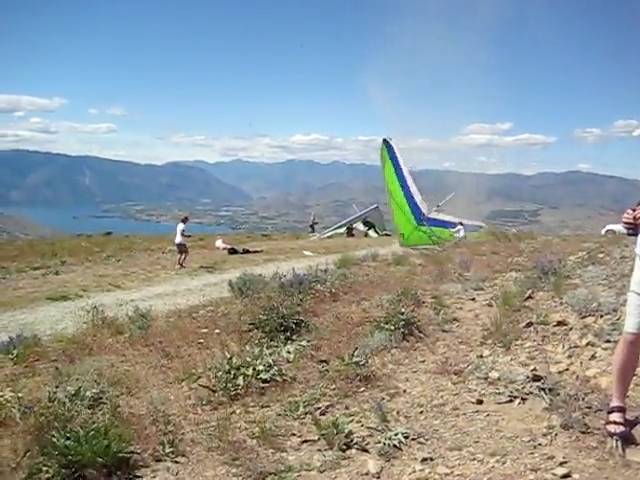
76-03721
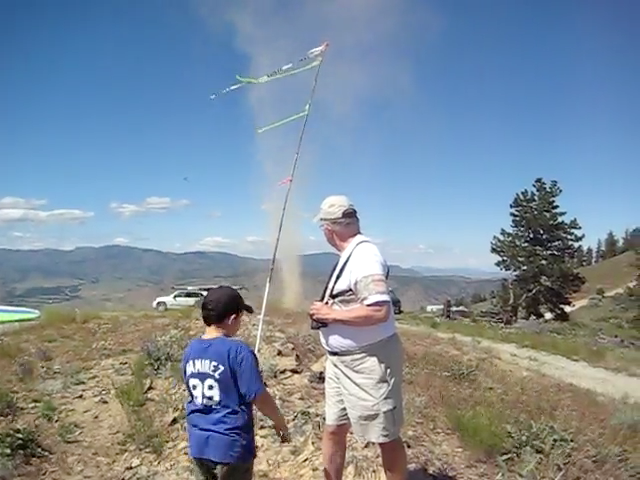
Fuck the Aussie Method. I'll NEVER live long enough to use it or anything else that happens more than two seconds prior to launch to reassure myself that I'm hooked in at the time my foot starts moving.
It's not about luck - I don't DO luck. It's about mindset and hardwiring.Frank Peel - 2010/06/09 23:30:15 UTC
And no Aussie has ever launched unhooked? Seems I can remember a few...
Nothing is foolproof. The Aussie method only works if the pilot NEVER unhooks from the glider while wearing the harness. But pilots have, then launched unhooked because they broke procedure. BTW, you do have to remember to hook in. It just comes at a different spot in the process.
Find a method and stick to it. Be ANAL RETENTIVE about it. If you are lucky everything will work out fine.
If not, well Darwin...
And thus you get to eliminate those incidents from your Sacred Statistics. How convenient.Robert Seckold - 2010/06/09 23:44:43 UTC
I hear what you are saying but the flaw in your argument is as soon as you unhook your harness you are using the AMERICAN method not the AUSSIE method.
Yeah, if you land in a gust front or the surf you hafta wiggle out of your harness instead of unclipping to keep the mindset of being able to assume that if you're in a harness you're connected to a glider totally impeccable.The Aussie method is you NEVER NEVER NEVER did I say NEVER NEVER NEVER unhook your harness until you have landed and are packing up.
And because YOU'VE done that many a time we can just assume that this is a good strategy to use for EVERYONE - despite plenty of incontrovertible evidence which tells us otherwise.If you forget something you climb out of your harness, something I have done many a time to correct something or get something out of my car.
You mean like ALWAYS assuming you're hooked in and NEVER verifying your status JUST PRIOR TO LAUNCH?You are so right that nothing is foolproof, my argument is why incorporate a flaw in your launch procedure in the first place that has the potential to kill you.
Haven't done much dune flying, have you?Dave Boggs - 2010/06/10 00:07:04 UTC
Beaumont, California
Never unhook while in it, Never.
In hang gliding? Fat chance. And, in any case, it's the fools who understand that they're fools who make the best students and pilots.Frank Peel - 2010/06/10 00:18:06 UTC
What is happening in your example is a digression from the pilot's regular procedure which is what is being cautioned as the source of failure. Anyway, to my knowledge there is nothing called the "American method". There's the standard way and the Aussie way. So don't blame it on us (or the rest of the world that also chooses the same approach). You're the guys who had to be different!
Oh, I understand how the Aussie method is supposed to work. My point is that people have mental lapses and make mistakes. Even Australians. (I know that hurts, but the pain is only momentary...)Then you are doing it correctly and are agreeing with my main point. You have a process and stick to it NO MATTER WHAT. Same here. My procedure is a mantra that gets repeated multiple times before each flight. I believe that is also a good thing: repetition. I don't do it and decide it is done. I check and recheck. It increases the chance of finding a mistake before it's a problem.If you forget something you climb out of your harness...Like unhooking the harness from the glider while using the Aussie method or forgetting to hook in when using the standard approach? Yeah, they will both kill you just as quickly. Like you agreed, nothing is foolproof....why incorporate a flaw in your launch procedure in the first place that has the potential to kill you.
Maybe the answer is that fools shouldn't fly?
And there are simply NO circumstances you can POSSIBLY envision in which it might be a less than stellar idea to either move to launch hooked in or wiggle into a harness at launch position? You're NEVER gonna launch unhooked, Robert, in the environments and circumstances in which you fly but you're NEVER gonna launch in all the environments and circumstances encountered by all the people who participate in this sport around the globe.Robert Seckold - 2010/06/10 00:33:58 UTC
I would have as much hope of unhooking my harness and walking over to my car while wearing my harness in a mental lapse as I would have of deciding to smash the window of my car and climb through the window to go for a drive, instead of just opening the door. In an infinite universe it could happen but so far out of the realms of possibility as to be essentially impossible.
I don't hafta REMEMBER to hook my harness to my glider JUST BEFORE I LAUNCH. I just always assume that I've FORGOTTEN to and thus a lot of adrenaline gets directed towards making goddam sure I HAVEN'T.Now if my set up procedure required me to REMEMBER to hook my harness to my glider just before I launch, when the adrenaline is pumping and many things are going on...I am just amazed that there are not more pilots launching unhooked.
The fatal flaw that damn near everybody establishes in training is that the pilot can use some idiot procedure in the setup area or the back of the ramp so he can ASSUME he's hooked in at the moment of launch.From what I have read on the net, is that it all starts as a convenience in training to save time with pilots climbing in and out of harnesses. The wrong habit is formed from the start and as I said sets up a flaw that has to be remembered for the next 20 years every time you move your glider towards launch and is a fatal flaw.
And the really cool part is you can assume everyone else is using it so you needn't be bothered to see if anyone else could use an extra pair of eyes at the critical moment.gluesniffer - 2010/06/10 00:51:26 UTC
I've gone to the aussie side - and I like it. You don't need to rely on anyone.
Yep. Good to go. Absolutely *NO* Possibility of ANYTHING happening such that you might find yourself unhooked at the edge of the ramp five minutes down the road.Dave Boggs - 2010/06/10 01:03:21 UTC
Exactly.
Hook in, hang check, do final walk around, put on harness (this makes me put on leg loops first) do pull through. Good to go.
My harness has far more hang time than I do.
Frank Peel - 2010/06/10 01:11:22 UTC
Well, it sounds like you guys have it all figured out and don't need the likes of me. I'll be sure to not participate in the future.
Right.
